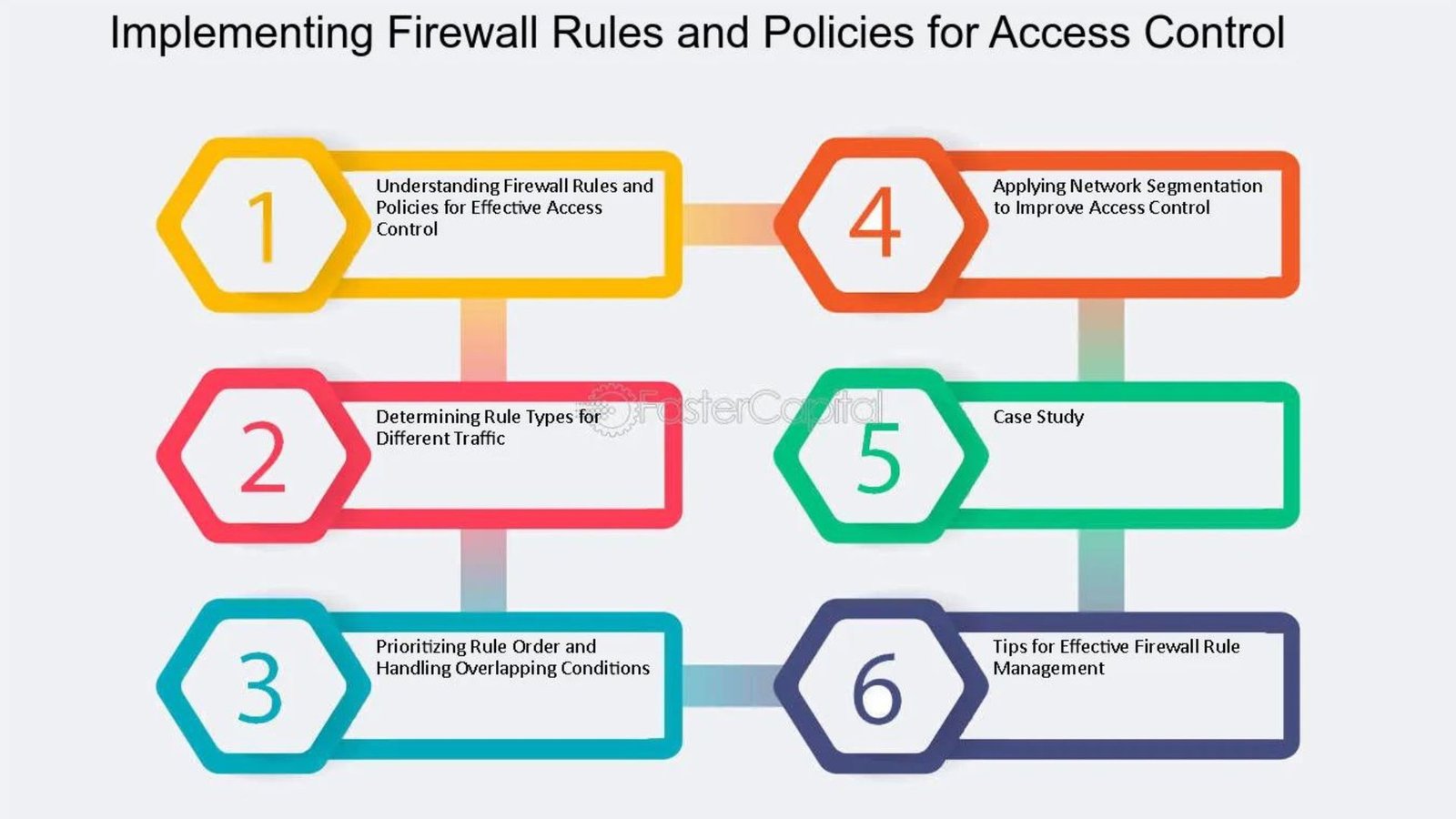When it comes to managing firewall rules, effective strategies are crucial for maintaining a secure network environment. Firewalls are vital for protecting your system from unauthorized access and potential threats. Here’s how you can manage your firewall rules efficiently to ensure robust network security.
Understand Your Firewall’s Rule Set
Before diving into managing firewall rules, it’s important to understand what these rules do. Firewall rules determine which network traffic is allowed or blocked based on criteria such as IP addresses, ports, and protocols. Knowing how these rules work will help you make informed decisions about configuring and updating them.

1. Start with a Clear Policy
Begin managing firewall rules by establishing a clear security policy. Define what types of traffic are allowed and which are restricted. A well-defined policy helps you create rules that align with your security goals and ensures consistent application across your network.
2. Use the Principle of Least Privilege
Apply the principle of least privilege when creating firewall rules. This means granting only the minimum necessary access required for applications and users. By restricting permissions, you minimize the risk of unauthorized access and potential vulnerabilities.
3. Organize Rules for Clarity
Organizing your rules can significantly impact the efficiency of managing firewall rules. Group similar rules together and arrange them in a logical order. This approach makes it easier to review and manage rules, reducing the chances of errors and conflicts.
4. Regularly Review and Update Rules
Regularly review and update your firewall rules to ensure they remain effective. Changes in network infrastructure or security requirements may necessitate updates. Set a schedule for reviewing your rules and adjust them as needed to address new threats or changes in your environment.
5. Implement Rule Testing and Validation
Before applying new or modified rules, test and validate them to ensure they work as intended. Use a test environment or simulation tools to verify that the rules do not inadvertently block legitimate traffic or create security gaps. This practice helps prevent disruptions and ensures rule effectiveness.
6. Document Rule Changes
Documenting rule changes is a critical aspect of managing firewall rules. Maintain detailed records of rule modifications, including the reason for changes and the date of implementation. Documentation helps track changes, troubleshoot issues, and maintain an accurate history of firewall configurations.
7. Avoid Rule Duplication
Duplicate rules can cause confusion and inefficiencies in managing firewall rules. Avoid creating redundant rules that perform the same actions. Regularly check for and remove duplicate rules to streamline your firewall configuration and enhance performance.
8. Utilize Rule Logging and Monitoring
Enable logging and monitoring for your firewall rules to gain insights into network traffic and rule effectiveness. Logs provide valuable information about traffic patterns and potential security incidents. Regularly review these logs to identify anomalies and adjust rules as necessary.
9. Prioritize Rules Based on Risk
When configuring your firewall rules, prioritize them based on the level of risk they address. Place high-risk rules at the top of the list to ensure they are evaluated first. This approach helps manage traffic more efficiently and enhances overall security.
10. Simplify Rule Sets Where Possible
Simplify your rule sets to make managing firewall rules more manageable. Avoid creating overly complex rules or configurations that are difficult to maintain. Simple, clear rules are easier to understand, manage, and troubleshoot.
11. Automate Rule Management
Where possible, automate the management of firewall rules. Automation tools can help streamline rule creation, updates, and monitoring. By automating repetitive tasks, you reduce the risk of human error and improve the efficiency of rule management.
12. Ensure Compliance with Security Standards
Ensure that your firewall rules comply with relevant security standards and regulations. This compliance is crucial for maintaining network security and meeting industry requirements. Regularly review standards and adjust your rules to ensure ongoing compliance.
13. Conduct Periodic Audits
Perform periodic audits of your firewall rules to ensure they align with your security policy and operational needs. Audits help identify any gaps or inconsistencies in your rules and provide an opportunity to make necessary adjustments.
14. Involve Key Stakeholders
Involve key stakeholders in the rule management process. Collaboration with network administrators, security teams, and other relevant personnel ensures that rules meet the needs of various departments and align with overall security objectives.
15. Stay Informed About Emerging Threats
Stay informed about emerging threats and vulnerabilities that may impact your firewall rules. Regularly review threat intelligence reports and security updates to adjust your rules accordingly. Keeping up with new threats helps ensure your firewall remains effective against evolving risks.
Conclusion
Effectively managing firewall rules is essential for maintaining a secure network environment. By following these tips, you can ensure that your firewall rules are well-organized, up-to-date, and aligned with your security policies. Regular review, testing, and documentation are key components of successful rule management, helping to protect your network from potential threats.










